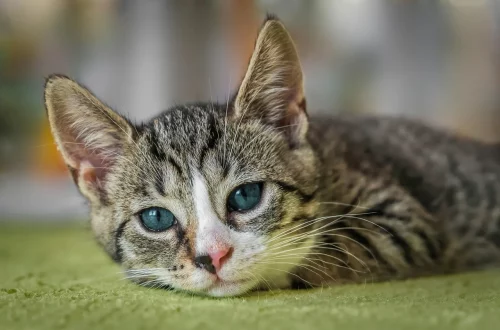
Does Table Salt Effectively Kill Fleas in Your Home?
Table salt, a staple in kitchens worldwide, is often overlooked for its potential utility beyond culinary purposes. Many homeowners grapple with flea infestations, particularly during warmer months when these pesky parasites become more prevalent. With concerns over chemical treatments and their potential impact on pets and children, natural remedies are gaining traction. Among these, table salt has emerged as a popular option. But does it truly possess the efficacy to combat fleas effectively? Understanding the characteristics and behaviors of fleas, alongside the properties of salt, is essential in evaluating its potential as a flea control strategy. Fleas can be a nuisance, causing discomfort to pets and humans alike, and finding a solution that is both safe and effective is crucial for many households. As we delve deeper into the capabilities of table salt as a flea deterrent, various aspects of flea biology and control measures come into play.
Understanding Fleas: Biology and Behavior
Fleas are small, wingless insects belonging to the order Siphonaptera. With approximately 2,000 species identified globally, these parasitic pests are notorious for their ability to thrive in various environments, particularly those inhabited by mammals. The most common flea species found in homes is the cat flea (Ctenocephalides felis), which, despite its name, affects both cats and dogs, as well as humans.
Understanding flea biology is key to controlling their populations. Adult fleas are typically 1-3 mm long and are known for their remarkable jumping ability, allowing them to leap up to 150 times their body length. This physical characteristic aids their rapid movement between hosts. Fleas feed on the blood of their hosts, which can lead to discomfort, itching, and in severe cases, anemia in pets. The life cycle of a flea consists of four stages: egg, larva, pupa, and adult. This cycle can be completed in as little as a few weeks under optimal conditions, making fleas a persistent problem in homes.
The mating process of fleas is equally fascinating. Female fleas can lay up to 50 eggs per day, which can fall off the host and into carpets, bedding, and other surfaces, leading to widespread infestations. The eggs hatch into larvae that feed on organic debris, such as flea feces, which consists of digested blood. After a few weeks, the larvae pupate and emerge as adults when vibrations or heat signal the presence of a host.
Understanding these aspects of flea biology is crucial for effective control. Simply targeting adult fleas may not suffice, as the other life stages can remain hidden and continue to proliferate. This complexity highlights the need for a multifaceted approach to flea control, considering both chemical and natural solutions.
How Table Salt Works Against Fleas
Table salt, or sodium chloride, is often touted as a natural remedy for various household pests, including fleas. Its effectiveness in killing fleas primarily stems from its dehydrating properties. When salt is applied to flea-infested areas, it can draw moisture out of the flea’s body, leading to dehydration and death. This method, while not as instant as chemical treatments, offers a more gradual and potentially safer alternative.
To utilize table salt as a flea control method, homeowners can sprinkle it liberally on carpets, upholstery, and pet bedding. After allowing the salt to sit for several hours or overnight, it should be vacuumed thoroughly. This process not only helps in killing adult fleas but also disrupts their life cycle by targeting eggs and larvae. The mechanical action of vacuuming can also assist in removing flea eggs and larvae from the environment.
However, it’s important to note that while salt can contribute to flea control, it is not a standalone solution. Its efficacy is often enhanced when used in conjunction with other methods, such as regular vacuuming and washing pet bedding. Furthermore, the concentration and exposure time can significantly influence the outcomes. For instance, a light dusting of salt may not be as effective as a more generous application left for an extended period.
Additionally, homeowners should be cautious when using salt around pets. While table salt is generally safe in small amounts, excessive exposure can lead to health issues in animals, especially if ingested. Therefore, careful monitoring of pets in treated areas is advisable.
Limitations of Using Salt for Flea Control
While table salt can be an effective tool in the battle against fleas, it is not without its limitations. One major drawback is that salt primarily targets adult fleas and may not be as effective against the larval and pupal stages of the flea life cycle. As previously mentioned, fleas produce a significant number of eggs, which can survive in the environment for months. If these eggs hatch after salt treatment, the cycle of infestation can easily resume.
Another limitation lies in the practicality of using salt as a remedy. Applying salt in large quantities can be tedious, and the residue left behind can be messy. Homeowners may also find it challenging to reach all the nooks and crannies where fleas tend to hide, such as under furniture or in crevices. Additionally, while salt can dehydrate fleas, it won’t repel them, meaning that new fleas can still enter the environment from outside or from other infested pets.
Moreover, salt does not address the broader problem of flea infestations. Fleas can also be introduced into a home through various means, including visiting other pets, outdoor exposure, or even through second-hand furniture. Therefore, relying solely on salt can lead to a false sense of security.
Combining the use of table salt with other flea control methods, such as regular grooming, household cleaning, and possibly the use of commercial flea treatments, is essential for a comprehensive approach. This multidimensional strategy can help in breaking the flea life cycle and ensuring a more effective long-term solution.
Other Natural Remedies for Flea Control
In addition to table salt, several other natural remedies can assist in flea control. Many homeowners seek alternatives to chemical treatments due to concerns about safety for pets and children. Some of these natural solutions include diatomaceous earth, essential oils, and vinegar.
Diatomaceous earth is a powdery substance made from the fossilized remains of tiny aquatic organisms called diatoms. When sprinkled in flea-infested areas, it can damage the exoskeleton of fleas, leading to dehydration and death. It is crucial to use food-grade diatomaceous earth to ensure safety for pets and humans.
Essential oils, such as lavender, cedarwood, and peppermint, are also popular for their pest-repelling properties. These oils can be diluted and sprayed in areas where fleas are likely to thrive. However, care must be taken, as some essential oils can be toxic to pets if ingested or applied directly to their skin.
Vinegar, particularly white vinegar, is another household staple that can repel fleas. A mixture of equal parts vinegar and water can be sprayed on pet bedding, carpets, and other infested areas to create an unfavorable environment for fleas.
While these natural remedies can be effective, they often work best in combination with other methods. Regular cleaning, vacuuming, and washing pet bedding are critical components of any flea control strategy. It is also advisable to consult with a veterinarian before introducing new substances into your home, especially if pets are present.
In conclusion, while table salt may serve as a supplementary tool in the battle against fleas, it should not be relied upon as a sole solution. A comprehensive approach that incorporates multiple strategies is essential for effective flea control.
**Disclaimer:** This article is for informational purposes only and does not constitute medical advice. Always consult a healthcare professional or veterinarian for any health-related concerns.




